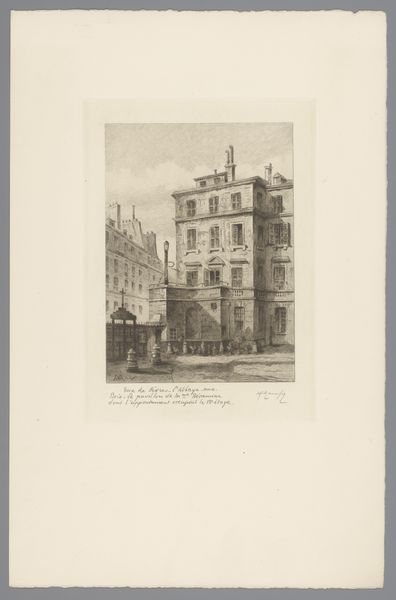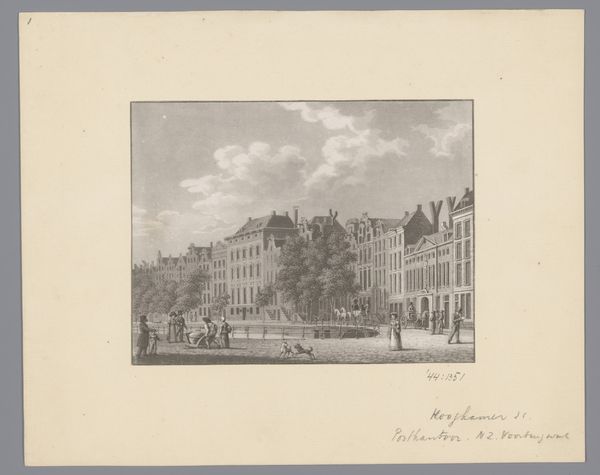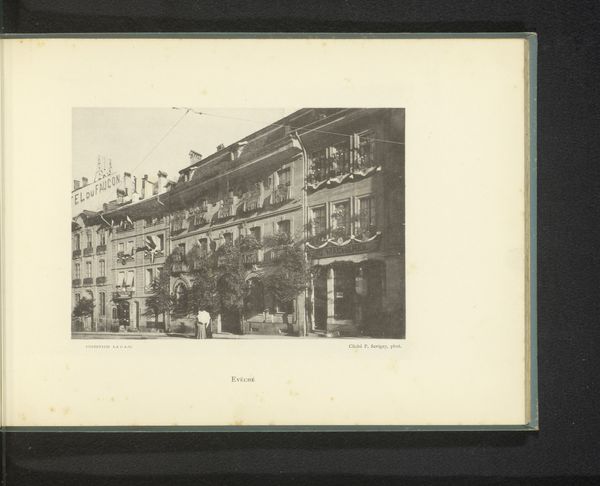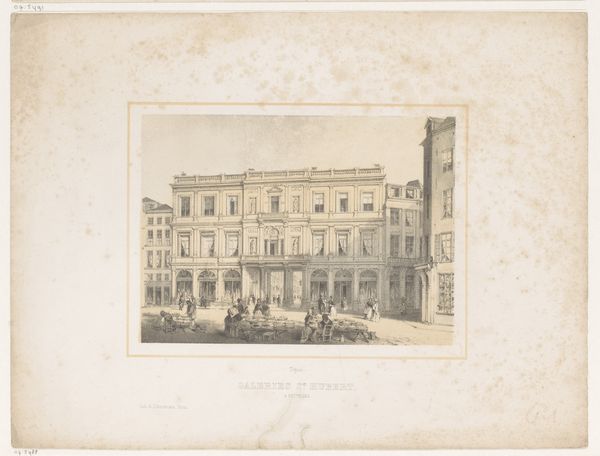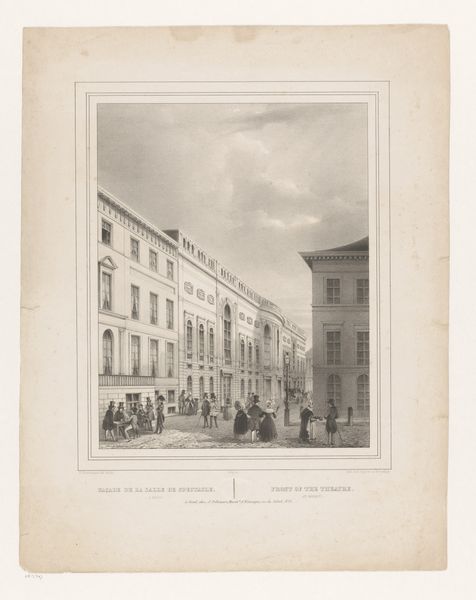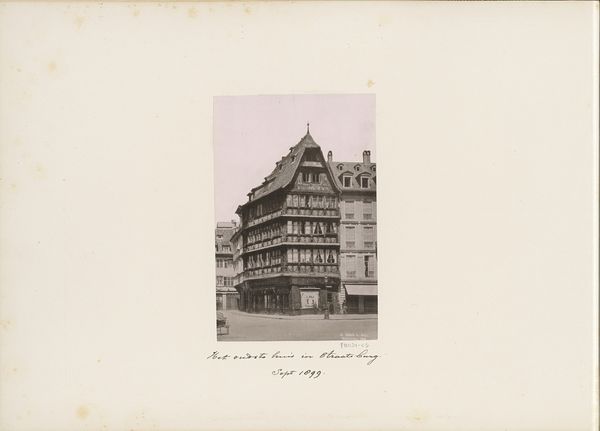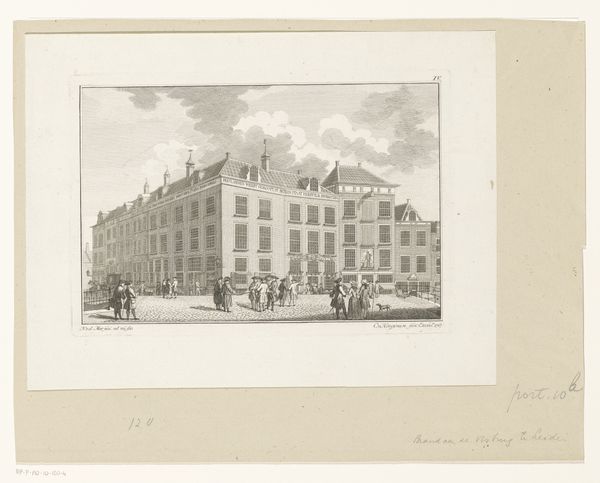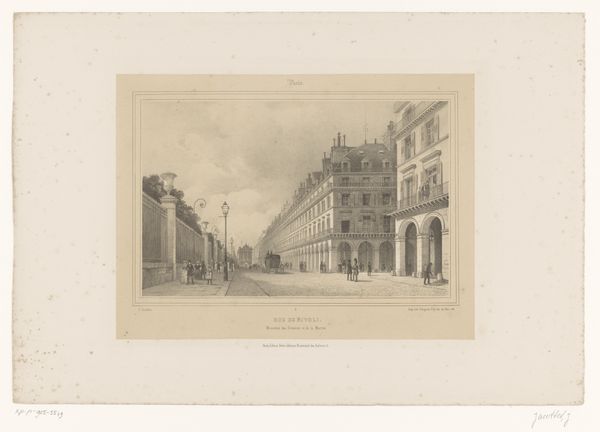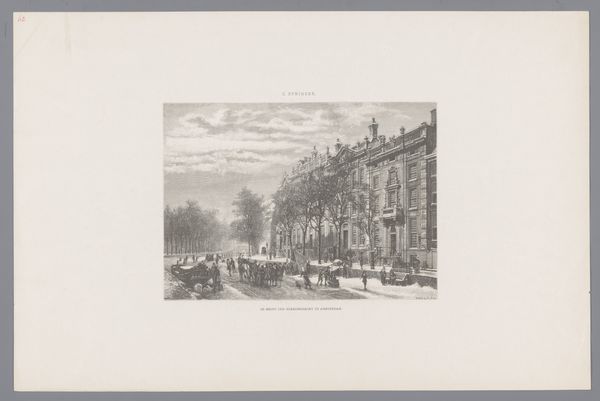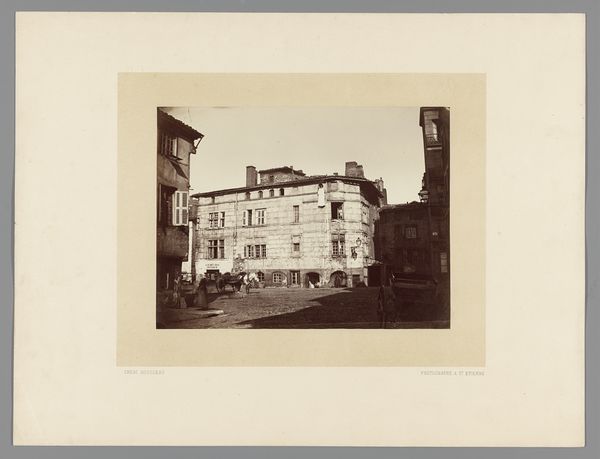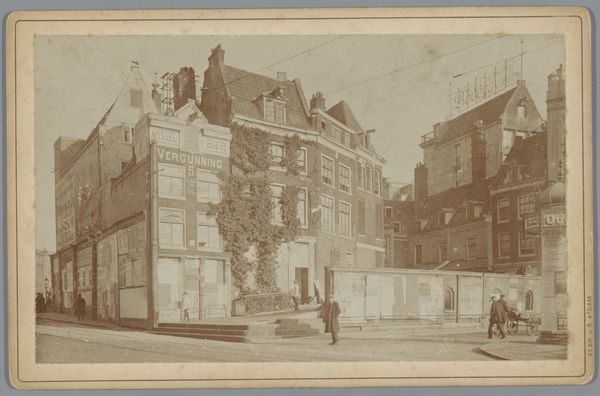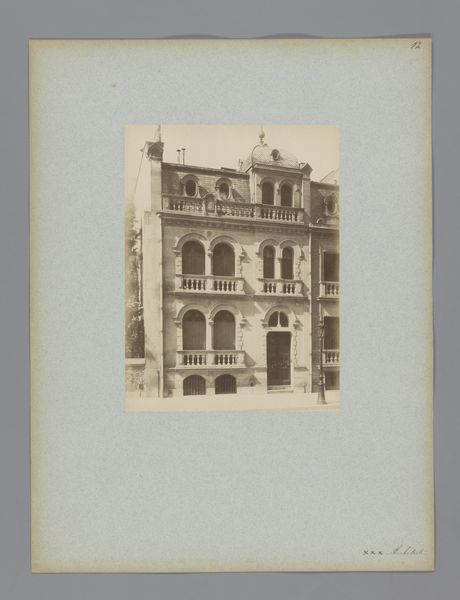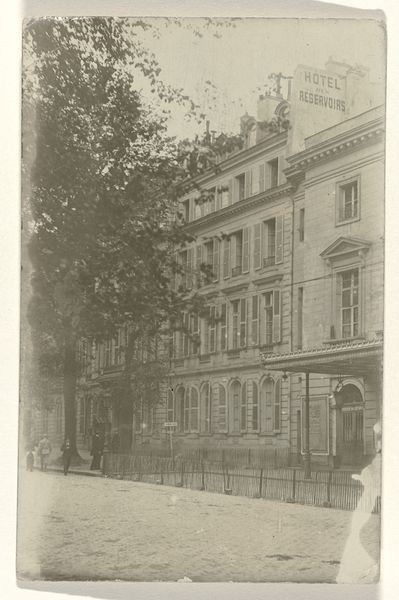
print, etching, engraving
#
neoclacissism
# print
#
etching
#
landscape
#
cityscape
#
engraving
Dimensions: height 231 mm, width 290 mm
Copyright: Rijks Museum: Open Domain
Curator: Today, we’re looking at "Gezicht op het Teatro alla Scala te Milaan" an etching and engraving by Louis Cherbuin, dating sometime between 1820 and 1875. Editor: It’s captivating. There’s a certain crispness in the architectural lines that almost feels…optimistic, despite the monochromatic palette. Curator: This piece reflects the values of its time—namely, neoclassicism. Think about what La Scala represents: a cultural institution, but also a physical manifestation of civic pride and aristocratic patronage. Cherbuin really captured the grandeur intended. Editor: I notice how Cherbuin balanced the static architecture with the dynamism of city life. The figures and carriages are deliberately placed to create movement leading the eye into the receding space. Curator: Exactly. Printmaking like this served a crucial role in disseminating knowledge about architecture and urban spaces. Consider who the audience would have been: eager to learn about cultural landmarks far beyond their reach. This print isn't just art, it is a tool for cultural expansion and shared societal experience. Editor: I’m struck by the almost mathematical precision of the composition. The symmetry of the building, the repeated archways and windows – each element contributes to this feeling of perfect order, or maybe controlled perspective. Curator: It shows how buildings can define a culture. By immortalizing structures like Teatro alla Scala, artists shaped perceptions of sophistication and civilization, encouraging cultural tourism, influencing urban development and so on. Editor: The light and shadow interplay is carefully controlled, but even so I find the rigid composition a little underwhelming overall, maybe too idealized. Curator: Idealized certainly, yet remember what it shows about access, cultural values, and societal pride that drove its production, all of which remain to this day. Editor: Agreed. There's an enduring legacy in the crisp details; and a perfect case study to think about formal technique as the extension of cultural forces at the time.
Comments
No comments
Be the first to comment and join the conversation on the ultimate creative platform.
